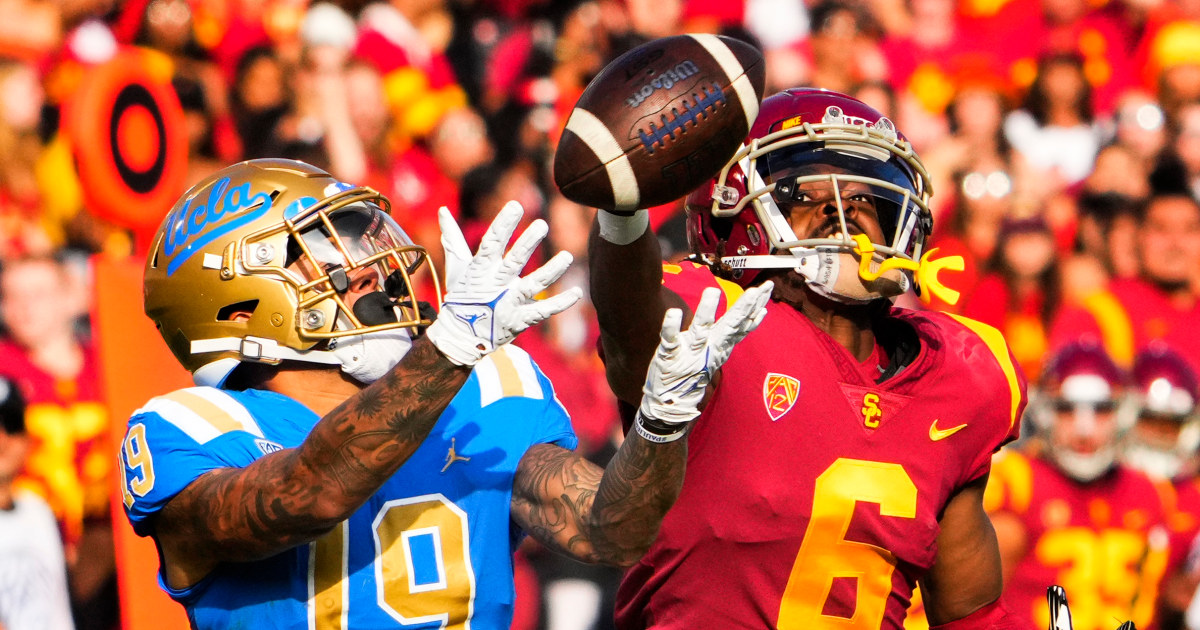UCLA and the University of Southern California, two of the best-known powers of college sports, will leave their century-old affiliation with the Pac-12 Conference in a seismic shift to the Big Ten, the schools announced Thursday.
The stunning announcement means that by fall 2024, the Big Ten, headquartered in Rosemont, Illinois, will have member schools as far west as Los Angeles and as far east as Piscataway, New Jersey, and College Park, Maryland.
USC and UCLA confirmed the move in separate statements Thursday, acknowledging their long histories in the Pac-12, as well as the opportunities the Big Ten presents student-athletes. And with both schools shifting conferences, the crosstown rivalry will remain intact.
“Additionally, it means enhanced resources for all of our teams, from academic support to mental health and wellness,” UCLA Chancellor Gene D. Black and Athletics Director Martin Jarmond said in a statement. “And although this move increases travel distances for teams, the resources offered by Big Ten membership may allow for more efficient transportation options.”
For fans, UCLA said, the shift will translate to better TV time slots for road games. Pac-12 football fans have long complained about late-night kickoff times set by networks in their current TV deal.
The Big Ten also offers more visibility, exposure and resources, as well as the “stability and strength of the conference,” USC Athletics Director Mike Bohn said in a statement.
Big Ten Commissioner Kevin Warren said that USC and UCLA submitted applications for membership and that the league’s Council of Presidents and Chancellors voted unanimously to add the schools.
They will join the conference at the start of the 2024-25 season.
It’s the most jarring development yet in the radical realignment of major college sports, which has led to other geographically challenged affiliations, driven by revenue from TV rights to football.
The Southeastern Conference, based in Birmingham, Alabama, now goes as far north as Columbia, Missouri, and by 2025 it will be as far west as Austin, Texas.
The Big 12 Conference, headquartered in Irving, Texas, which has a long affiliation with the Great Plains, will stretch west to Provo, Utah, and as far south and east as Orlando, Florida, by 2023.
The USC and UCLA defections are a crushing blow to the San Francisco-based Pac-12, which was formed as the Pacific Coast Conference in late 1915 by the University of California at Berkeley, the University of Washington, the University of Oregon and Oregon Agricultural College (now Oregon State University).
In a statement, the Pac-12 said it was “extremely surprised and disappointed” by the decision.
“We’ve long been known as the Conference of Champions, and we’re unwavering in our commitment to extend that title,” the statement said. “We will continue to develop new and innovative programs that directly benefit our member institutions, and we look forward to partnering with current and potential members to pioneer the future of college athletics together.”
USC joined the league in 1922 and UCLA in 1928, and the Pac-12 now also includes Washington State, Stanford, Arizona, Arizona State, Colorado and Utah.
The Pac-12 on Friday said its board of directors has given league officials a green light “to explore all expansion options,” in a desperate attempt to save the century-old alliance.
“The 10 university presidents and chancellors remain committed to a shared mission of academic and athletic excellence on behalf of our student-athletes,” according to a conference statement.
Football powerhouse Oregon, with its close ties to sports apparel giant Nike, and Washington, which has won two of the past six Pac-12 title games, could be attractive targets of poachers.
Cal and Stanford, two of the world’s most elite universities who play in America’s sixth-biggest TV market, could also land in a new alliance.
The Associated Press contributed.



